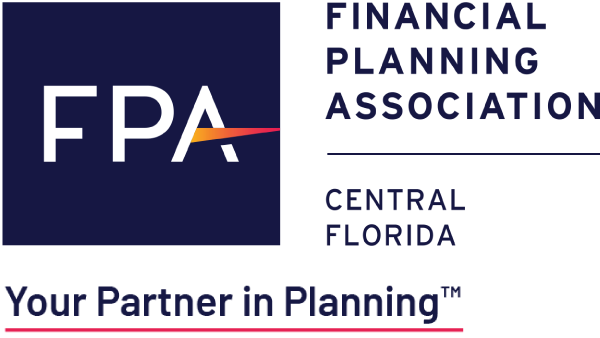
Nine Key Sources of Retirement Income—and How to Manage Them Efficiently
 Year after year, in survey after survey, the biggest fear people report having about retirement has to do with either running out of money or falling short of income once work — and the paycheck that accompanies it — stops.
Year after year, in survey after survey, the biggest fear people report having about retirement has to do with either running out of money or falling short of income once work — and the paycheck that accompanies it — stops.
Indeed, a recent survey by the fund company Vanguard found that retirement income is the area of retirement that people feel least confident handling. For retirement-minded people, one way to allay those nest egg-related concerns is to gain a better understanding of the sources that will provide them income for retirement, and of how to efficiently manage those income streams — in short, how to create a paycheck for retirement by coordinating the various guaranteed, partially guaranteed and non-guaranteed sources of income to which they’ll have access during retirement, while also seeking to minimize taxes.
For people approaching retirement, “it’s really important to not just look at the types of income they will have, but the taxation of the income streams and how guaranteed those income sources are,” says Scott Bishop, who as both a Certified Financial Planner™ and CPA (Certified Public Accountant) manages taxes and retirement finances for clients at STA Wealth Management in Houston, TX.
Don’t wait until retirement is right around the corner to address the retirement income issue. Right around age 50 is a good time for people to start focusing on their retirement income picture, Bishop suggests. “Starting to look at [an income strategy] 10 to 15 years before retirement gives you the ability to adjust [the strategy] without there being too much pressure.”
The first step to developing a retirement income strategy is to take stock of the sources you expect to provide income during retirement, how much they will supply, when they’ll supply it, for how long and in what form (lump sum or in a series of payments). Then it’s a matter of taking steps to manage those sources as tax-efficiently as possible.
Here’s a look at nine of the sources people tend to tap for retirement income, with some keys to managing each:
Social Security. This is a guaranteed source of income for many people in retirement, “guaranteed” meaning it will provide a certain amount of income, on a specified date or at an agreed-upon time or interval, for a guaranteed length of time — in this case, a lifetime. While people can opt to start drawing Social Security benefits as early as age 62, if they don’t need that income immediately, it is often best to delay payments at least until full retirement age (age 66 or 67, depending on year of birth), or even better, to age 70. Doing so can earn a person valuable “delayed retirement credits” that increase the monthly benefit when they do start taking payments. Waiting until age 70 can be well worth it, as each year a person delays drawing benefits beyond full retirement age through age 70 nets a valuable “delayed retirement credit” equal to an annual 8% raise in benefits. According to the Center for Retirement Research at Boston College, delaying benefits from age 62 to the full retirement age of 66 can generate 33 percent more in monthly income, while waiting until age 70 yields a 76 percent jump in income. For example, a person who would get a benefit of $1,000 a month at age 62 would get at least $1,333 at age 66 and $1,760 at age 70.Besides income needs, says Bishop, factors such as a person’s current health, projected longevity (life span) and marital status also must be weighed in the decision about when to start taking Social Security benefits. The Social Security Administration provides calculators to help estimate benefits at various ages. Access them online via www.socialsecurity.gov/estimator/ and www.socialsecurity.gov/planners/benefitcalculators.htm. For answers to other questions about the program, check out https://faq.ssa.gov/ics/support/splash.asp. Given what’s at stake, and the complexity of Social Security rules, it can be wise to enlist a retirement income expert for help deciding when to start taking Social Security. To find one in your area, visit the Financial Planning Association’s searchable national database of personal finance experts at www.PlannerSearch.org.
A “qualified” retirement plan, such as a 401(k) or traditional IRA. Qualified plans are retirement plans in which contributions are taxed on the way out, not the way in — they are tax-deferred, meaning distributions will be taxed as income when withdrawn. Because they’re usually tied in some way to the stock market (via mutual fund investments and the like), they are considered semi-guaranteed sources of income, whereby fluctuation in the value of accounts may impact the amount and the timing of the income the account provides. When assets in the accounts increase in value, their income-producing capability increases; likewise, when the assets in those accounts lose value, their income-producing ability decreases.Starting at age 70-and-a-half, account holders must start withdrawing money from their accounts in the form of required minimum distributions (RMDs). RMDs apply to people who own traditional IRAs, SEP IRAs, SIMPLE IRAs, 401(k) plans 403(b) plans, 457(b) plans, profit sharing plans, and other defined contribution plans. The IRS offers an overview of RMD rules on its website at www.irs.gov/Retirement-Plans/Retirement-Plans-FAQs-regarding-Required-Minimum-Distributions.In most cases RMDs come out as lump sum payments that are taxed as income. One of the keys to managing RMDs, according to Bishop is to keep them from bumping a person into a higher income tax bracket. To do so, it can make sense to take RMDs before age 70.5, taking care to avoid penalties by following IRS rules about early distributions. Another way to manage RMDs is by converting funds in qualified accounts into Roth accounts.For people with a 401(k) who could benefit from another guaranteed income source for retirement, it’s also worth finding out if their 401(k) provider offers an option to use some of their account assets to purchase an in-plan annuity. Today a small but growing minority of 401(k)s and other qualified plans actually offer such an option.
It’s also worth considering a QLAC, short for qualified longevity annuity contract. It’s an annuity-like income tool for people who own a qualified retirement account such as a 401(k). Instead of taking required minimum distributions in lump sum from such an account beginning at age 70.5, a person can use some of that money to purchase a QLAC that’s guaranteed to provide an income stream beginning at a later point in retirement. Held inside the qualified retirement account, a QLAC allows you to delay the lump-sum income you’d otherwise get as distributions until later in life (starting as late as age 85) and spread it out over time, so you get a steady source of guaranteed income during the later retirement years.
A Roth IRA. Tax diversification — holding assets in accounts with varying tax treatment — is among the keys to efficiently managing retirement income streams. So besides qualified accounts, it’s wise to keep other assets in a “Roth” account. With Roth IRAs and 401(k)s, contributions are taxed on the way in but come out tax-free. What’s more, there are no RMDs on Roth IRAs held by the original owner. Retirement-minded people should consider contributing to a Roth vehicle and/or converting qualified assets into Roth assets. Here’s another area where guidance from a financial professional can be helpful.
A pension provided by an employer. A pension is another source of guaranteed income, although these days, according to the workplace benefits research organization EBRI, only about 2% of workers in private industry actually have access to a pension plan. If you’re among the lucky ones with pension benefits awaiting them after retirement, you likely have choices about how to take that income: in a lump sum, or in some form of annuity payment guaranteed for a lifetime. Choosing the latter also often means deciding whether to attach a spousal “joint survivor” option to those annuity payments, whereby the payments would flow to the surviving spouse if the main pension recipient dies first. Factors such as overall income needs, the current health of the two spouses, and the financial stability/credit quality of the company providing the pension, are among the key factors that weight into decisions about a pension, according to Bishop.
A taxable investment portfolio. Many people rely on an investment portfolio residing outside their workplace retirement plan to provide income for retirement. That income may come via the systematic sale of those assets, with the proceeds providing income, and/or via dividends, in the case of stocks, mutual funds and the like, and in the case of bonds, interest payments over the life of the bond. The big issue with a taxable investment portfolio is figuring out, from a tax perspective, which assets would be best to sell off for income, when. Because they are based on the make-up of a person’s overall portfolio of assets, these decisions are highly specific to the individual. It’s also vital to ensure the assets in a portfolio are appropriately diversified to provide growth potential along with protection from volatility.
An insurance contract, such as an annuity. If the goal is to add more guaranteed income to the mix, it may be worth looking at some type of annuity contract for retirement. In some cases, it can make sense to use a lump sum, such as a 401(k) distribution, to purchase an income annuity. An annuity is a product offered by an insurance company. The premise behind an income annuity is simple: Hand over a lump sum to the insurance company in exchange for a guaranteed stream of monthly payments. Those payments can start immediately or at some predetermined point in the future, like age 75 or 80. They can last for a predetermined period of time, or for a lifetime, depending on the type of annuity, and may come with a variable or fixed payment.
Home equity, via a maneuver such as a reverse mortgage. The equity in your home can also be a source of retirement income. That equity can be accessed through a home equity line of credit or possibly through a reverse mortgage. A reverse mortgage amounts to a loan against the equity in your home, whereby a lender makes payments to you, the homeowner, based on a percentage of the value in your home. For some people, they may be worth considering as a retirement income source. Here again, a qualified financial professional can help determine if you’re a good candidate for such a maneuver.
Real estate, such as a rental property. A rental property can provide a substantial stream of income for retirement, while also adding diversity to a person’s asset portfolio. “It’s one place to find a source of passive income, so you don’t have to rely entirely on a stocks-and-bonds portfolio,” notes Bishop. Owning a rental property may entail being a landlord, a responsibility some people might not be comfortable with, particularly in their retirement years. But that property isn’t just an income source, it’s an asset a person can hold onto, earn income from and eventually sell or pass on to heirs.
Employment earnings. More people today are deciding to work in their 60s and 70s, because they want to stay in the working world and/or because they need the income and workplace benefits that come with a job. Here’s another decision that may factor heavily into a person’s overall retirement income picture.

